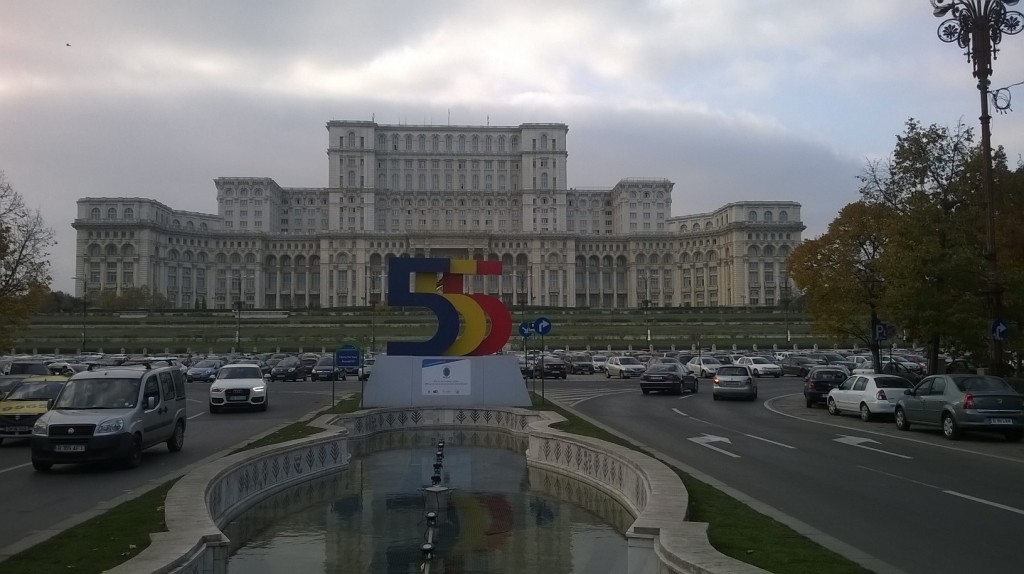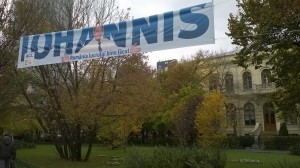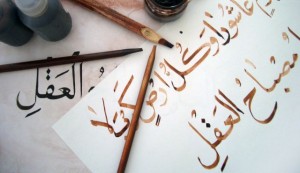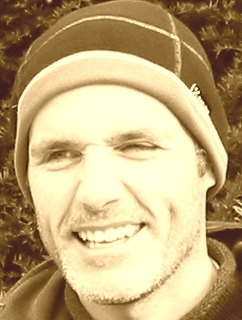Romania’s myths, legends, warts and charms
Romania defies many of the unflattering stereotypes associated with the country. To me, it shone because it doesn't profess to be a shining light.
Monday 17 November 2014

When I told people that I was going to Brașov and Bucharest, reactions varied from “be careful” and “nice girls” to “isn't it just full of Gypsies?” and “where is that?” So I just said I'm visiting Dracula in Transylvania, and they just laughed. What did poor little Romania do to earn such scorn?
Don't get me wrong, Bucharest and its environs have no shortage of forlorn grey buildings and decrepit streets that you would expect of the former Eastern bloc. But whereas East Berlin, Prague, Budapest, Riga, etc. have airbrushed out most remnants of that period with a post-EU makeover, Bucharest is still very much wrestling with its past.
A bit poorer than other former communist countries and with so much more ‘socialist development' to undo – namely the widespread ‘systemisation' of villages and towns across the country – much of Bucharest still evokes its communist past.
But that could be a blessing in disguise, if you think hard about it. Foreign investment and the rampant changes that big money brings to urban landscapes has been slower to arrive in Romania, and the complex legal wrangling over ownership of confiscated properties in what is left of the city's old quarter has slowed the cancerous spread of cranes over Bucharest's skyline.
Romania is also still not in the eurozone, and seems unlikely to be allowed to join for some time, despite promises to the contrary made in Brussels when the country joined the European Union in 2007.
For tourists this means two main things: Bucharest remains a relatively cheap European city trip, especially with low-cost airlines like Whizz and Ryanair now plying the route with some frequency; and it is a refreshingly authentic and richly diverse destination.
Why does authenticity matter? Well, if you travel often enough, you will know the answer to this question. European cities are all starting to look or feel a bit samey: the same chain coffee shops, strip malls lined with familiar clothes stores, the feeling that the medieval or Art Nouveau houses were finished by urban colourists.
So much slower to paint over its communist past, Bucharest is left with an opportunity to embrace the story, and what it means to modern Romania. It is a sensitive subject, no doubt, but hiding or glossing over the past is rarely a good recipe for thriving.
City planners could or perhaps should think about drawing a circle around that part of its recent history to mark the spot, as it were, where many memorable things happened. Yes, many bad things – deprivation, a systematic crushing of cultural identity and murderous actions – during the rule of Nicolae Ceaușescu. But also ‘monumental' things; legacies such as the building of the so-called ‘Popular House' (more on that later) which dominates a massive swathe of the city centre, and the Parisian-styled boulevards the former dictator created may, after some decades of healing, become tourist beacons in the league of the Eiffel Tower, White House or Taj Mahal.
There are signs it may already be happening. I took an official tour of the Palace of Parliament – as it is now called after the Romanian government agonised as to what to do with this White Elephant following Ceaușescu's downfall in a dramatic and bloody revolution in 1989 – and learned first-hand that embracing the past (it's good and bad aspects) doesn't come easy to some.
“It was cheaper to make it into the Parliament and use the building that so many Romanian craftsmen and women worked hard to build than pull it down,” the tour guide offered dryly in answer to the question of how Romanians now feel about this towering hulk of a building, knowing how it came into existence.
Touted as the second-biggest free-standing building in the world after the Pentagon, ‘Madman's House', as it is also referred to behind closed doors in Romania, covers a whole city block. Churches, hospitals and thousands of houses were demolished in the 1980s to make way for Ceaușescu's monolithic ode to socialism, which to most who witnessed or ‘volunteered' to build it spoke more to his and, perhaps more so, his wife's megalomania.
In the nearly one-hour tour of the bowels of this 1,100-room monster, which only took in three of the reported 12 floors and just a small sample of the various halls, chambers and endless corridors, not once did the tour guide mention Ceaușescu's name. Nor did she explain the backstory to the December 1989 uprising. This was an ‘official' tour, and the guide was either careful not to discuss politics, as it were, in what is now the Houses of Parliament or she was just not very good at her job.
Intrigued by the probable side-stepping of the questions by our guide, it didn't take much searching to learn that praising the crimes of “so-called totalitarian regimes or denigrating their victims” is forbidden by law in Romania. So that would then apply to the Ceaușescu regime, I presume. Indeed, TV journalist Dinel Staicu reportedly received a hefty fine for praising Ceaușescu and airing pictures of the former leader.
Two sides
Not so careful was the guide on a private bus tour to Brașov in Romania's central area, which is more famously known as Transylvania. The much younger, rather chirpy, guide (certainly for 7:45 am) breezily described the chain of events leading up to Ceaușescu's ill-fated last speech on the Piata Victoriei, the ensuing riots, civilian deaths and eventual capture, two-hour trial and summary execution of Ceaușescu and his wife Elena on Christmas Day 1989.
“That was Romania's Christmas present that year,” said the guide. “Not many mourned the death of the second dictator, who made the first communist dictator Gheorghe Gheorghiu-Dej who died in 1965 seem like a nice guy!”
But Ceaușescu, who led Romania from 1967 to 1989, didn't start out that bad, she went on to explain. He became increasingly erratic and distant from the people during his decades-long rule. Something many Romanians blamed on Elena and their lack of education.
The fact that they both came from very humble beginnings gave them a common touch to begin with but that changed as Ceaușescu's personality cult grew. He gave himself such titles as ‘Conducător' (Leader) and ‘Geniul din Carpați' (The genius of the Carpathians), and by the time they returned from a visit to North Korea, witnessing the grandiose avenues of Pyongyang and the socialist-inspired urban landscapes, there was no stopping them … well, almost.

The other figure in Romanian history with an equally complicated back-story is that of Vlad Țepeș (1431-1477), alias Vlad the Impaler and inspiration for the fictional Count Dracula. A story so convoluted by folktales, legend, stories of witchcraft, eerie castles, fictional characters and a grain of truth, Vlad Țepeș is a larger-than-life character in Romanian history. But with the benefit of romantic hindsight, and a growing understanding of the bankability of such stories, Romanians clearly more easily embrace some parts of history better than others.
Vlad III, Prince of Wallachia, is being celebrated this year as Romania's great protector and unifier following his bloody campaign (neatly rounded to) 555 years ago to rid Wallachia and surrounding territories of the Ottoman Turks. Vlad was born in Sighișoara, a city on the Târnava Mare River, and raised in Târgoviște in south-central Romania, together with his brother and father, Vlad II Dracul(ea), who was Voivode of Wallachia – now a province of Romania, with Bucharest at its centre.
Time to settle once and for all the confusion between Vlad the Impaler and Dracula: The castle that hordes of tourists see in Bran, just south of Brașov, is not Vlad's castle. It may not have even been the castle Bram Stoker had in mind when he wrote Dracula in the 19th century, as the Irish author apparently never visited the area, but rather concocted his story from a heady blend of geographical facts, patronymic borrowings (his father was a member of the Order of Dragons, or ‘drac' and ‘ulea', meaning ‘son of') and regional mythology.
“In Romania today, schoolbooks and historians extol [Vlad Țepeș] as a patriot and a champion of order in lawless times, while the outside world knows him as the vampire count of a thousand cinematic fantasies … a spoof figure or a ghoul,” write Rough Guide Romania's authors. “Horrible though his deeds were, Vlad was not accused of vampirism during his lifetime. However, vampires were an integral part of folklore in Eastern and South-eastern Europe, known as vámpír in Hungarian and strigoi in Romanian.”
Some attribute the ‘vampire' phenomenon to regional folklore concerning a ‘flying one' or Zburator who enters people's homes and tortures young women coming of age with bites, pinches, tickling and worse. There are also tales of vampire-like behaviour in battle, with a victor ‘tasting' a victim's blood to take in his power. “Even to this day, some villagers in Romania are known to encircle their houses in salt and put up garlic against evil spirits,” our guide offers with a wry smile.
Bram Stoker's 1897 work, which taking bits and pieces of fact and fiction, managed to stoke (sorry about that!) the imagination of a growing reading population (this is before film and TV) who were gripped with excitement and fear over such real stories as Jack the Ripper in London. Anyway, it makes for a good story and even better source of business for a nascent tourism industry.
Gypsies and sleaze
I have yet to address the other two stereotypes thrown up at the mention of Romania. On the bus to Brașov, the guide asked the dozen or so travellers what their impressions of Romania were before coming to the country.
The Israelis sitting nearest the door said “attractive girls and casinos” without blushing in the slightest. Some Americans – no sorry, they said “we're from San Francisco” like it was a country – said they had heard of Vlad and Transylvania with a hint of embarrassment. The Italians and Spanish said they connected Romania mostly with Gypsies. I said rather pompously, as a resident of Brussels, most of my impressions were about Romania's entry into the European Union and the “Roma question”, thinking the politically correct term would be appreciated. Nope.
The tour guide nodded thoughtfully and quick as a whip said, “So, more Gypsy stereotypes!” She went on to explain where the Romani came from and touched on the complicated relationship Romania has with a community that numbers between 650,000 and 850,000 people, depending on who you consult. Faced with discrimination both at home and abroad, many Romani do not declare their ethnicity in the official census and often don't carry or own identity cards or birth certificates.
Upon joining the EU, many hoped that the plight of this minority in Romania and elsewhere in the expanding EU would improve. Despite vast programmes, and funding for worthy projects aimed at education, skills and ‘inclusion' – through the likes of the European Social Fund – evidence of continued high levels of discrimination remain. Progress in Romania itself seems to take the back-burner to wider efforts to spruce up the economy (and the streets of the capital, it has been suggested!).
The tour guide didn't hide the fact that she regretted her country's reputation is hurt by its association with the Romani, and the challenges they present to what is effectively a developing country in Europe's midst.
Wisely, she made no mention of mass deportations, periods of slavery and other privations throughout the centuries that the Romani have lived in the land now called Romania. Alas, it was a trip to visit pretty towns and Dracula's castle not a debate on the ‘Roma question', but I was pleased to have gotten as much information as I did from such a trip.
Taxi drivers were more forthcoming about politics and sleaze – and for many a formative impression on the tourists by ripping them off during the trip from the airport to Bucharest. My driver when leaving the country – a friendly and open fellow, as almost all contacts in Romania had been – said he had been driving taxis for 16 years and despite clear improvements in everything from the roads to the ‘luxuries' in the shops, he felt his chances of getting ahead were slim.
“It's the rule of the first seven years,” he offered philosophically. “It gives all the chances later.” So, that's the foundation for success in Romania, I paraphrased. “Yes, the foundations, as you say; the rich ones have the sports cars and think it is their right to be like they want to workers; they have power.”

I asked him, then, if he will be voting for the socialist candidate in the election the following week (15-16 November). “No, he will destroy us … like the first socialist we got after Ceaușescu!”
That was frank, I thought to myself. So it seems the economically liberal PNL party headed by an up-and-coming city mayor Klaus Iohannis of the Christian Liberal Alliance would be his preferred presidential candidate over current Prime Minister Victor Ponta, who is leader of the Social Democratic Party.
“So, Iohannis is the better choice,” I offered. The driver looked in the rear-view mirror, raised his eyebrow and said, “Yes, better, not best … but I will vote for him.”
Go-go gone?

And as to the suggestion of cheap liaisons in smoky pubs and go-go clubs. Well, I admit I had imagined something like Prague or Budapest, but the historic quarter, which is the main tourist hub (the bit that was spared Ceaușescu's socialist revisionism) had only a smattering of such joints. I was approached once on my second night by the stereotypical black-leather jacketed guy offering girls and more, but that was it. Brussels, Amsterdam, Hamburg … these are more sordid cities than Bucharest.
I never felt intimidated by anyone. The metro, though bleak, was by no means scary. The trains ran on time and the information boards were clear. Romanians respected your space but were happy to help when approached. They didn't tout for business or force conversations on you. They were getting on with life, as it should be.
Altogether, Romania defied many if not all of the obvious stereotypes. To me, it shone because it doesn't profess to be a shining light. It is definitely a tourist destination on the up, and it deserves a ‘better' rap, if the not the ‘best' rap.


